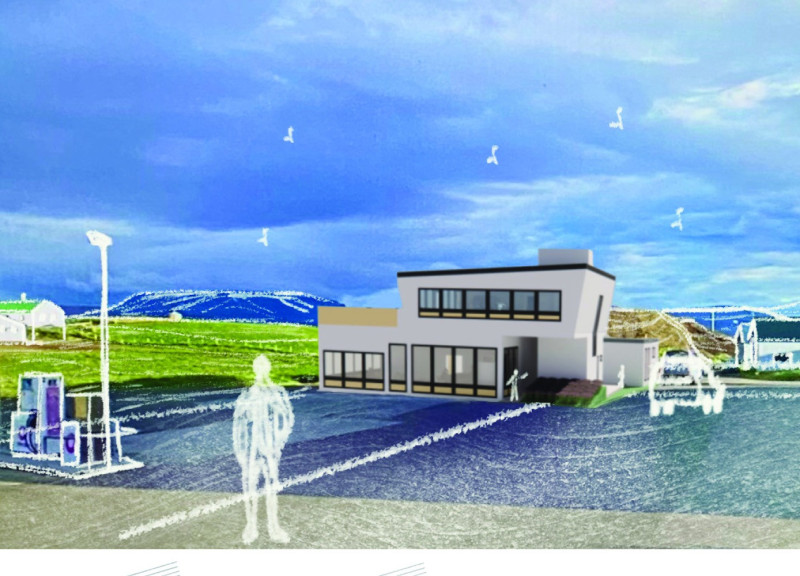5 key facts about this project
At its core, the design serves multiple purposes, catering to the needs of its users while promoting an engaging interaction with the site. The layout has been meticulously planned to maximize natural light, with expansive windows that not only invite the outdoors in but also provide stunning views of the surrounding terrain. This emphasis on transparency and openness creates a seamless connection between indoor and outdoor spaces, which is pivotal in modern architectural strategies.
The project's architectural expression is defined by a careful selection of materials that reflect both the landscape's character and the design's innovative vision. Use of locally sourced stone combined with timber adds warmth and grounding to the structure. These materials have been chosen not only for their aesthetic value but also for their environmental performance, underscoring a commitment to sustainability. The careful detailing of joints and intersections exemplifies craftsmanship while ensuring durability, which is essential for the longevity of the building.
Special attention has been paid to the roofline, featuring a modern silhouette that complements the building's form while providing functional benefits such as rainwater harvesting and optimal solar orientation. The overhanging eaves are a distinctive feature, offering shade to outdoor spaces while also contributing to the building's energy efficiency. This consideration reflects a broader understanding of architectural design, where elements serve dual purposes and contribute to the overall sustainability of the project.
Uniformity and asymmetry play crucial roles in the facade's design. The rhythmic arrangement of windows and doors creates a visual balance, while thoughtful positioning introduces dynamic interactions with the light throughout the day. This approach to design encourages a dialogue between the edifice and the natural environment, fostering an appreciation for both the structure and its context.
Functionally, the interior spaces are delineated thoughtfully, promoting fluid movement and interaction among inhabitants. Layouts have been intentionally designed to support communal activities while allowing for privacy where necessary. The spatial organization incorporates adaptable spaces that can accommodate a variety of uses, reflecting modern lifestyles that prioritize versatility.
Unique design approaches are evident in the incorporation of biophilic elements throughout the project. From vertical gardens that enhance air quality to the use of natural materials that speak to the tactile experience of the building, the design prioritizes user well-being. These choices illustrate a deeper awareness of how environment influences human experience, underscoring a commitment to creating spaces that are not only functional but also enrich people's lives.
The architectural design emphasizes sustainability through innovative technologies integrated into the building's systems, such as energy-efficient heating, cooling, and ventilation. These systems not only reduce the environmental impact of the building but also enhance the overall comfort of its occupants. The project recognizes the importance of energy sustainability, aligning with global architectural trends steering towards environmentally responsible building practices.
A significant focus has also been placed on the external landscape, which complements the architecture. Hardscape and softscape elements have been designed to coexist harmoniously, promoting ecological diversity while providing functional outdoor spaces for recreation and relaxation. The selection of native plants contributes to reducing the landscape's water demand, reinforcing the project's commitment to sustainability.
In conclusion, this architectural project exemplifies a thoughtful synthesis of form, function, and environment, standing as a testament to contemporary design principles. Readers are encouraged to explore the project presentation for further details, including architectural plans, architectural sections, architectural designs, and architectural ideas that delve deeper into the nuances of this innovative endeavor. Discover how these elements come together to create a striking yet serene environment that serves every facet of its intended purpose.


























